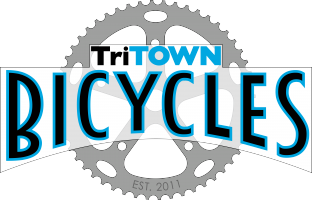The Tri Town Times: 1/9/23
- Posted on
- By Antonio Gonzalez
- Posted in the tri town times
- 0

This week: Ironman moves men's world championships to Nice, France. Climbing Mt Everest analogy for building fitness. The hidden cost of inaction.
Image: Idaho gravel.
Hi all,
Here is your weekly Tri Town Times newsletter:
Industry news:
Ironman announced that Nice, France will co-host the Ironman World Championships through 2026. Ironman is committed to a two-day event, with men and women racing on different days. In 2022, this format proved too stressful on the local economy in Kona, Hawaii, requiring Ironman to search for a second location. The 2023 event will see the men racing in Nice on September 10th, and the women racing in Kona on October 14th. The genders will flip location annually through 2026.
Training thoughts and updates:
I had an interesting conversation the other day with professional triathlete and coworker Travis Wood. We were reviewing training schedules, and he observed that many athletes seem to take too long of an off-season. I couldn't agree more. We know the importance of taking a planned period of time to reduce training and recharge the body and mind, but many people embrace the off-season a little too aggressively by completing shutting down for months on end. A complete shutdown is rarely necessarily while being highly detrimental to building fitness year over year.
I like to use an analogy of climbing Mount Everest when talking about preparing for a big endurance event. You don't climb Mt Everest by simply showing up at the base and climbing straight to the top. Climbers spend over a week just hiking to the base of the mountain. When the real climbing begins they'll spend over a month before reaching the top.
The climb itself is a series of ups and downs, climbing from camp to camp, hauling supplies and spending time acclimating at each camp. They don't simply hike from the bottom to the top in one continuous push.
The best endurance athletes are like these climbers. They maintain a relatively high base level of fitness by doing the equivalent of living at Base Camp 1 or 2. When they need to make a push "to the top", they are relatively close to their goal. It will be still be a challenge and a struggle, but they are well acclimated to the demands they'll be asking of their body and mind.
On the other hand, some athletes seem to fly from a sandy beach straight to Base Camp 1. From there, they hope to hike to the top of the mountain in one continuous push. This can be a recipe for disaster, often resulting in a failed attempt, burnout, or even injury. After the adventure, the athlete flies straight back to the beach to relax until next season.
This analogy is not specific to endurance sports. A study of Gaelic football playersshowed those who trained the most during the non-competitive season had a lower risk of injury, were able to run more in terms of raw miles and high-intensity miles, and maintained a more optimal body weight. In short, maintaining some degree of quality training year-round is key to high performance.
Sir Isaac Newton touched on another risk of 'flying to the beach' during the off-season when he pointed out that a body at rest will stay at rest, and a body in motion will stay in motion. We should be cautious of inaction. Yes, there is a cost to doing hard things, but there is another, higher, and hidden cost of doing nothing.
Quote that struck a chord:
"The status quo was what people assumed they would get if they failed to take action. 'Many instances of prolonged hesitation , and of continued reluctance to take positive action, should probably be explained in this fashion." ' Michael Lewis quoting psychologist Daniel Kahneman in the Undoing Project.
It's easy to argue for inaction. At the root of inaction lies the assumption that things will remain as they are:
"I've never had to exercise before. Why start now?"
"I've always eaten this way. Why change now?"
"I've tried before and it didn't work. Why try again now?"
"I don't know what to do. So I'll do nothing."
Of course life never really remains the same. What remains the same is the path that you're on and the direction you're heading. Are you on a path that leads to your definition of success, or is your path leading somewhere else?
Don't know what action to take? Not a problem, just get started. The simple act of taking action often begets further action. A lot of learning happens by simply doing. I would much rather coach someone who has been doing the wrong training than someone who has been doing no training. I can show someone what a quality workout routine looks and feels like, but I can't motivate someone to get moving if the desire is not already there.
The cost of taking action may seem high. The cost of waking up early, or committing to a new routine, of giving up junk food, etc. So we go back to the status quo, to what we've always done. In short, we hesitate.
The real question should not be, "What's the cost of taking action?"
The real question is, "What's the cost of hesitation?"
Train smart,
Antonio Gonzalez
Tri Town Bicycles
Like the newsletter? Please forward to a friend so they can subscribe.

Comments
Be the first to comment...